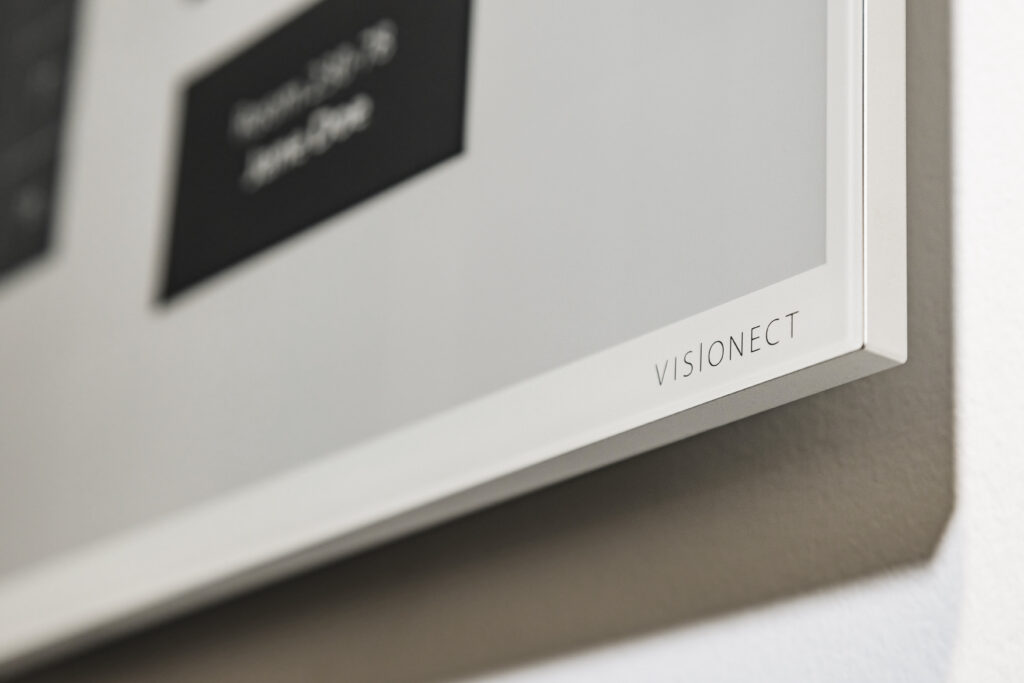

Built to Last: Displays that Defy the “Disposable Tech” Trend
Visionect, 27 Nov 2024
In today’s tech world, smartphones are expected to be replaced every two years and laptops every five. Companies like Apple, Samsung, and Lenovo release new features and software that their legacy devices simply can’t handle, driving their customers to upgrade whether they want to or not. Despite this push, customers are looking for longer-lived solutions, seeking green tech that’s built to last rather than quick obsolescence.
“In March 2019, 26% of iPhone buyers held onto their previous phone for three years or more. […] As of March 2021, 34% of iPhone buyers replaced a phone at least three years old,” CIRP – Apple Support.
What if a tech company stood behind its older devices? What if they were built to last instead?
The Issue With Disposable Tech
The major negative effects of this disposable tech trend include
- The environmental impact as more waste goes into landfills
- The financial cost to customers as they frequently replace devices
- Increased energy consumption for manufacturing and shipping new devices
- Loss of user data and settings as they migrate to the new device
This rapid turnover of new tech has conditioned customers to expect a short lifespan from today’s devices, driving a cycle that’s both financially taxing and environmentally damaging. If companies committed to building longer-lasting devices, they could reduce waste, lower consumer costs, and create a lasting impact on people and the planet.
“Waste is one of the most significant challenges of our time, with volumes projected to double by 2050. In Europe alone, over 30% of waste still ends up in landfills, while recycling rates vary across nations.” – Forbes.
Step 1: Durable Materials
One way tech companies can combat the disposable tech trend is by building products with durable materials to improve tech longevity. Take, for example, Apple’s decision to house the original iPhone 5C in plastic while its higher-end counterpart, the iPhone 5, was crafted from aluminum. The difference in durability was reflected in Apple’s expectations for the longevity of each model, with aluminum signaling a sturdier, more lasting device than plastic for e-waste reduction.
This factor is why Visionect focuses on durable materials for the Place & Play line of e-paper displays. The Place & Play 32”, 13”, and 6” devices are manufactured with aluminum housing and glass screens. These design choices not only make long-lasting devices, but are also renewable materials and recyclable with less impact on the environment.

Step 2: Reliability
Technology quickly becomes obsolete once it becomes unreliable. When a device is labeled a “legacy” product and loses the manufacturer’s support, and when systems get overloaded or updates outpace the hardware’s capabilities, consumers often feel pressured to upgrade and discard their old devices. These factors drive a cycle of frequent replacements, even when devices still retain some functional value.
Visionect displays are designed with a minimalist philosophy: while the exterior has a minimalist design, the interior also uses only the minimal power needed for the displays to perform efficiently. This power-saving technology leaves ample capacity for Place & Play displays to be as powerful or efficient as each use case demands.
Step 3: Maximum Efficiency
In terms of efficiency, e-paper displays offer ultra-low power consumption. They consume 99% less power than traditional LCD or LED screens. Remarkably, an e-ink display can use as little energy over an entire year as it takes to brew a single cup of coffee since these devices only draw power when updating content.
Unlike an iPad or Android tablet that suffer from early battery degradation, Visionect’s product line is engineered for low power consumption, allowing the batteries to last years longer than traditional tablets and smartphones. Powered by long-life batteries and designed to consume hardly any power, these screens can run for months, even years, with little intervention — saving costs and reducing maintenance needs.
Step 4: Legacy Support
Unlike many tech companies that leave older devices behind once they’re labeled “legacy,” Visionect takes a different approach. Place & Play devices come with long-term support, making sure they last well beyond the typical tech cycle. With regular software updates and smooth integration of new features, Visionect helps users get the most out of their devices, fighting against the idea of planned obsolescence. This commitment to supporting older models means you can trust that your Place & Play e-paper displays will stay reliable and functional for years — helping build a more sustainable tech future.

Embracing a Long-Lived Tech Trend
The disposable tech trend has created a never-ending cycle of constant upgrades, growing e-waste, and unnecessary costs. However, companies like Visionect are changing the game by focusing on durability, reliability, efficiency, and long-term support. These solutions help reduce environmental impact, cut down on maintenance costs, and excel in the digital signage game for years to come.
It’s time for a revolution in how we think about our devices. Let’s move away from the cycle of short-lived tech and embrace sustainable, long-lasting options that benefit both us and the planet.
Want to see what the future of durable, efficient digital displays looks like? Ask us about Visionect Place & Play solutions today.
Tags

